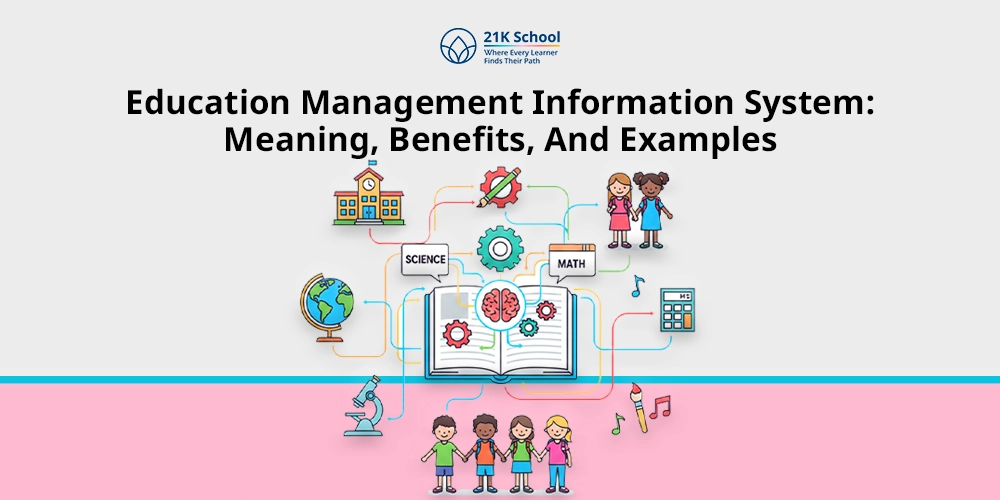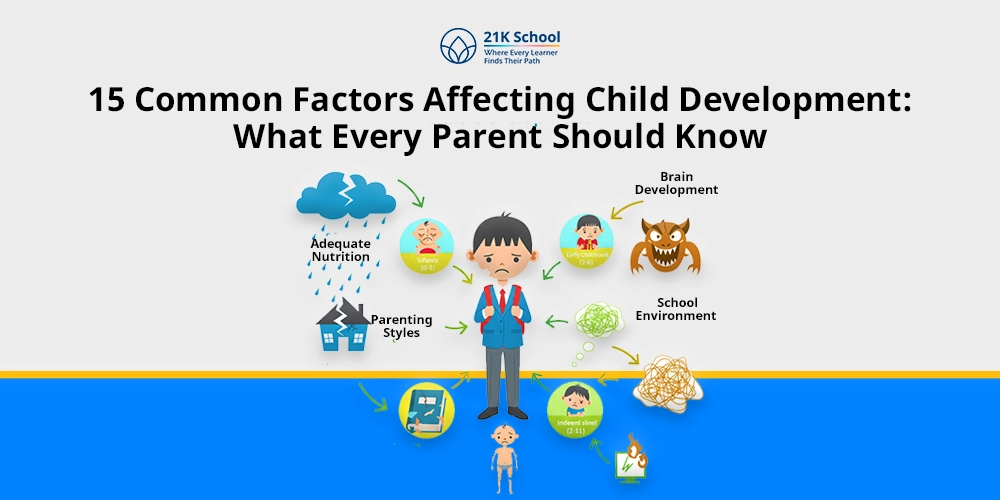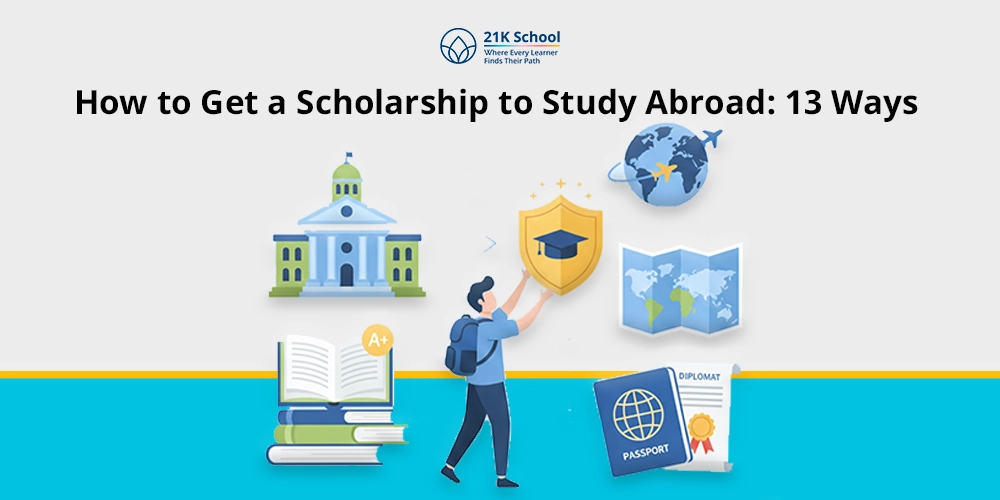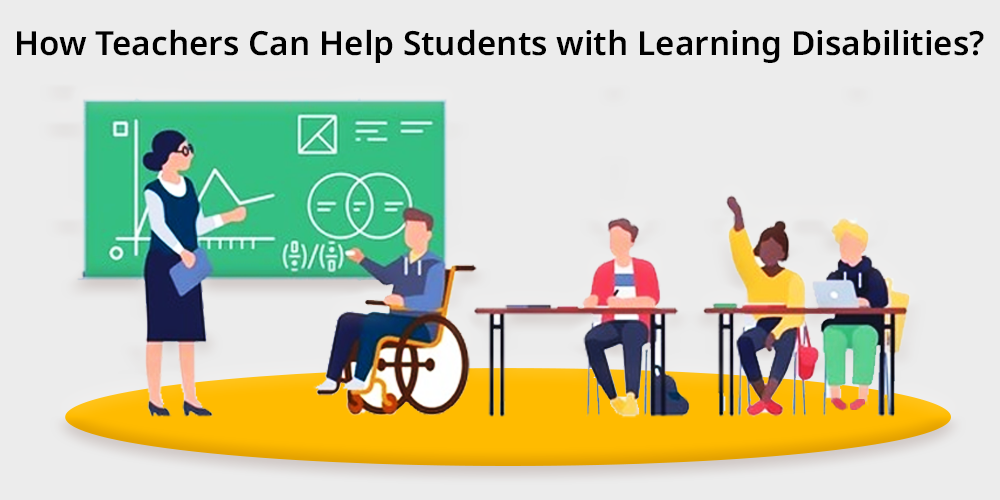
Do you know teachers are the most vital resources for promoting inclusive education?
Teachers’ support for disabled students is essential in fostering children’s academic performance and allows them to develop social skills. Teachers also assist in developing a positive learning environment and help in building an inclusive learning environment.
Teachers can help students with learning disabilities through various strategies such as personalised learning, introducing new curriculum, guidance and support, promoting cultural awareness, peer-to-peer education and so on.
A proper teaching strategy helps students to boost confidence and develop interest as well as confidence to engage in social activities and enhance their academic preparation.
This also allows students to effectively communicate with others and reduces stress and anxiety, which allows them to develop positive behaviours.
Contents
- 1 Strategies For Teachers to Help Students with Disabilities
- 1.1 1. Visual Representation
- 1.2 2. Self Awareness
- 1.3 3. Assistive Technology
- 1.4 4. Peer Tutoring
- 1.5 5. Break Down Lesson
- 1.6 6. Multisensory Instruction
- 1.7 7. Differentiated Instruction
- 1.8 8. Provide Feedback and Support
- 1.9 9. Reduce the Writing Process
- 1.10 10. Use Tape Recorder/Voice Recorder
- 1.11 11. Give Extra Time
- 1.12 12. Develop an Inclusive Learning Environment
- 2 Challenges Faced by Teachers while Supporting Students with Learning Disabilities
Strategies For Teachers to Help Students with Disabilities
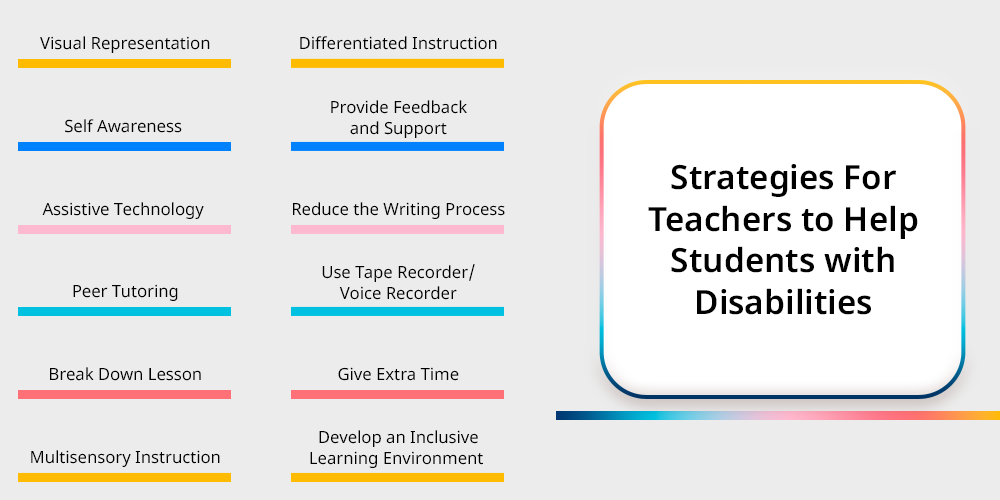
Teachers can use various strategies and fun in learning activities to support students with disabilities. Children with physical disabilities have problems in academic performance as well as hamper students’ social and emotional learning.
Here you can check the strategies that teachers can use to support students academics with disabilities.
1. Visual Representation
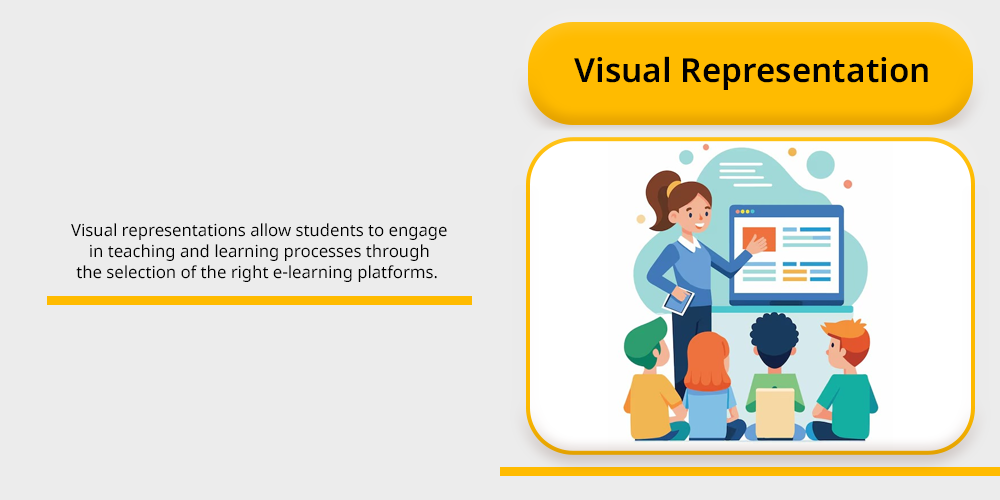
Visual representations allow students to engage in teaching and learning processes through the selection of the right e-learning platforms. Using computers and digital elements aids in maximising the content student learning retention as well as enhances concentration and focus.
As the visual interaction contains interactive and fun learning approaches, and hence enhances their brain stimuli.
2. Self Awareness
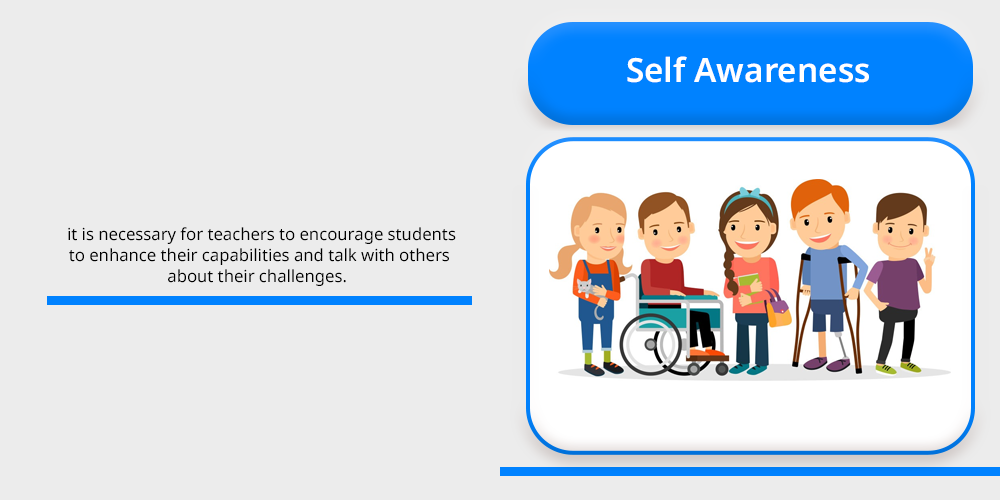
Self awareness is very important for kids with disabilities, children must have self confidence and self awareness about their limits. Disabilities in students cause them to doubt their abilities, due to which they find it difficult to socialize with others and doubt their abilities.
In such a scenario it is necessary for teachers to encourage students to enhance their capabilities and talk with others about their challenges. Teachers can also assist children with disabilities to develop strength and passion.
3. Assistive Technology
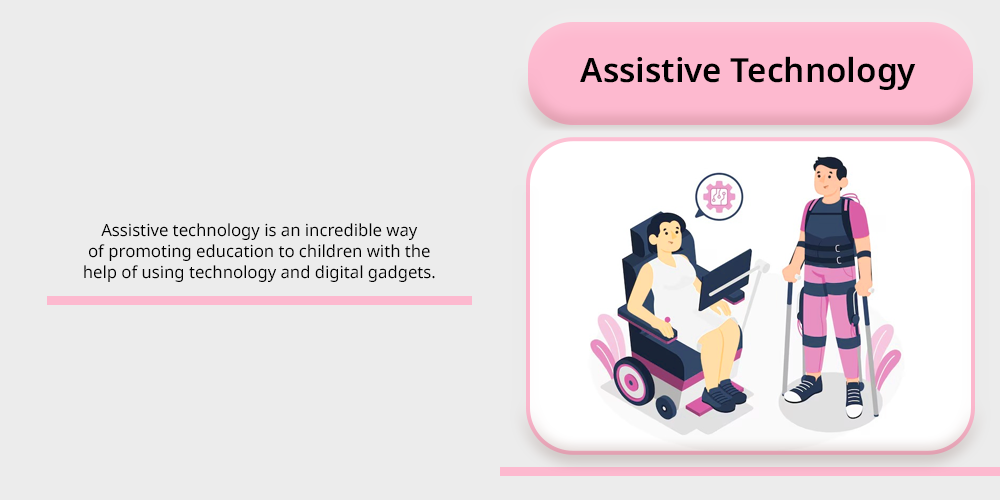
Assistive technology is an incredible way of promoting education to children with the help of using technology and digital gadgets.
Using supportive tools and devices helps students to understand the concepts more easily and helps them to develop positive relationships with others. Through assistive technology in education children with disabilities can perform well in their academics as well as help in socialising them.
4. Peer Tutoring
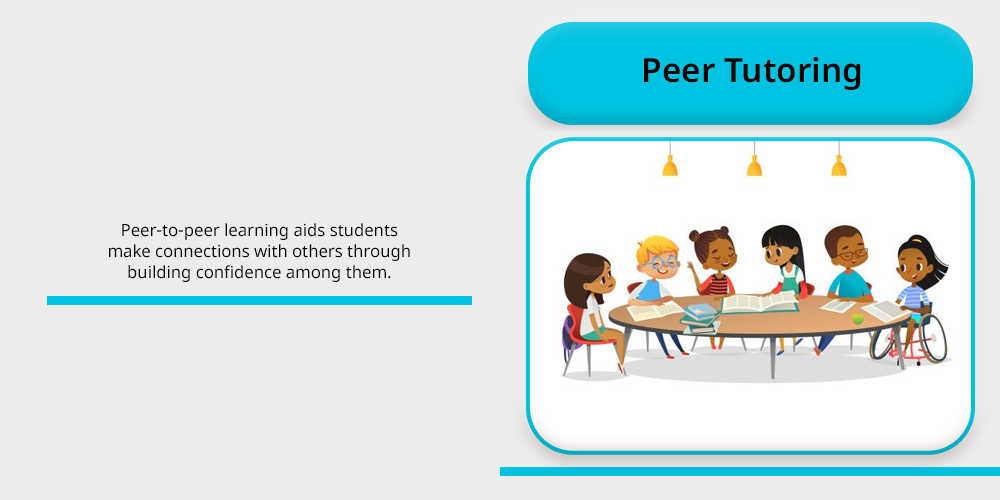
Peer tutoring is an incredible way of teaching students with the help of other students. This method develops collaborative learning methods and allows them to support each other’s studies.
Peer tutoring also helps students with disabilities receive sympathy and encouragement from their peers. This enables the development of social skills among such students. Peer-to-peer learning aids students make connections with others through building confidence among them.
5. Break Down Lesson
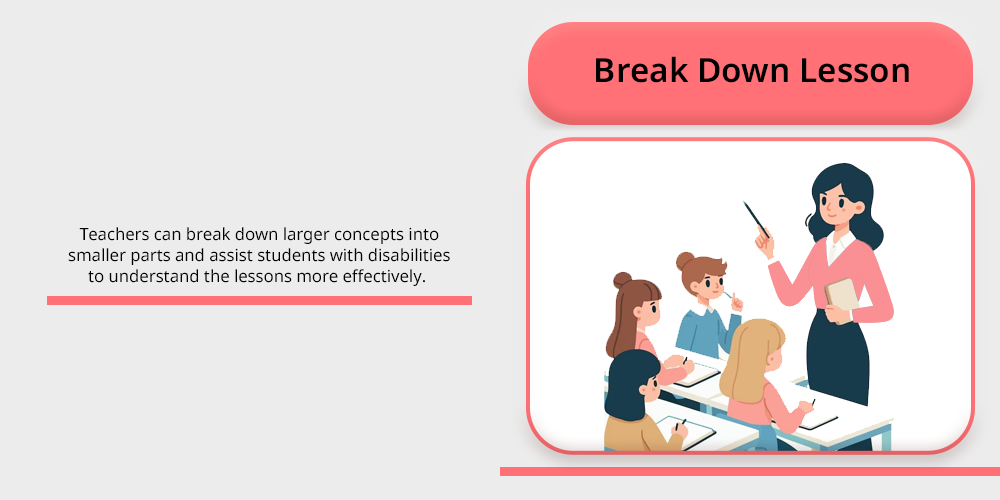
Teachers can break down larger concepts into smaller parts and assist students with disabilities to understand the lessons more effectively.
Through these teaching methods, teachers can encourage students to become independent learners and understand difficult concepts more easily. It also allows students with disabilities to grasp lessons through fun learning approaches.
6. Multisensory Instruction
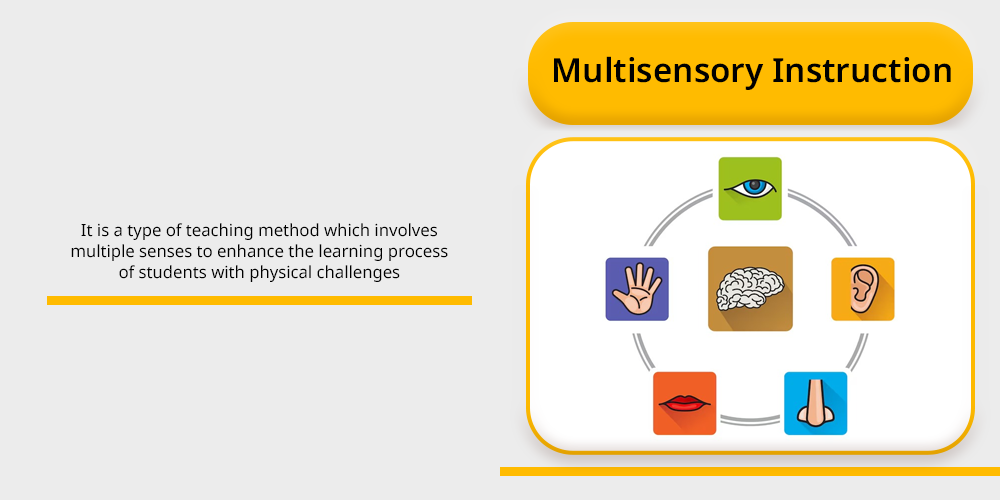
It is a type of teaching method which involves multiple senses to enhance the learning process of students with physical challenges. For multisensory instruction, teachers can use multiple strategies such as manipulatives, digital literacy, visual aids, and verbal instruction.
This method helps students enhance their cognitive skills and enhance their retention skills. This learning method allows children with disabilities to understand concepts according to their learning style.
7. Differentiated Instruction
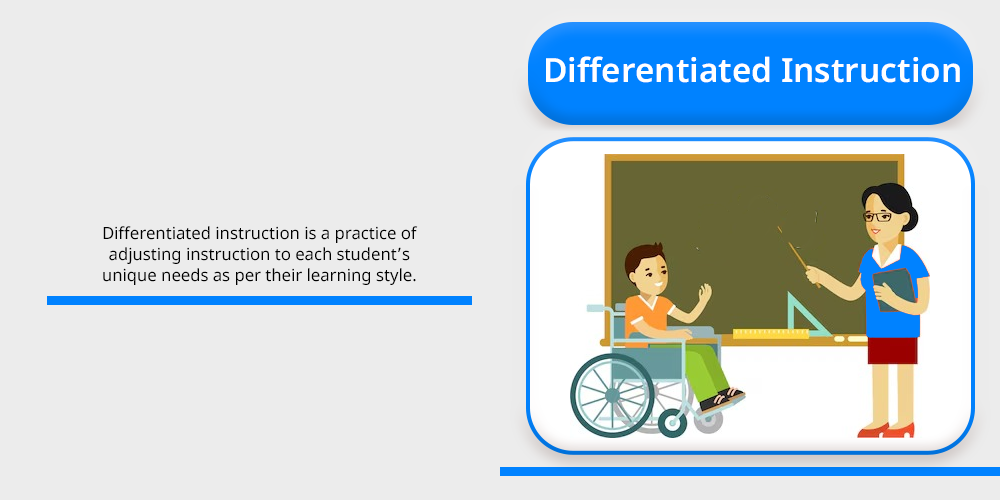
Differentiated instruction is a practice of adjusting instruction to each student’s unique needs as per their learning style. With the help of this technique, educators can give physically challenged students instruction that suits their learning preferences, pace and level.
This allows students to engage with others and develop strong problem-solving skills as well.
8. Provide Feedback and Support
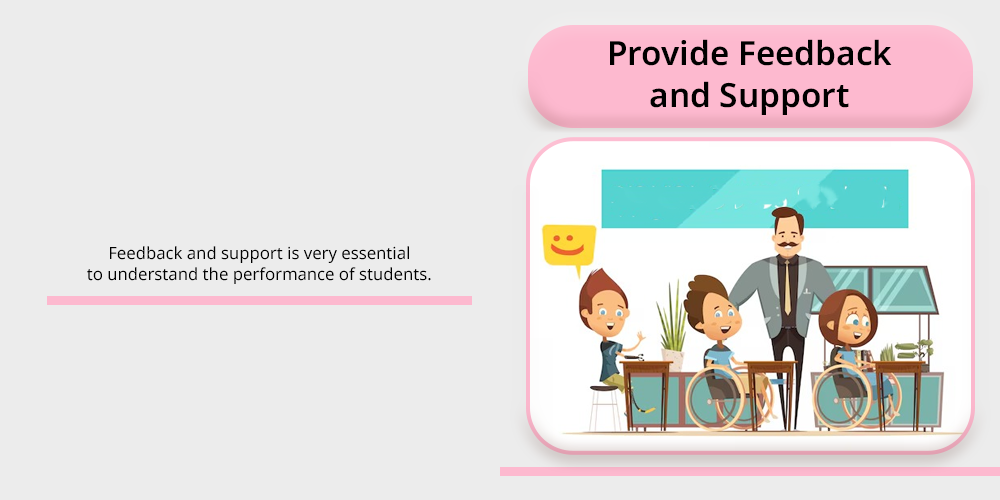
Feedback and support is very essential to understand the performance of students. Students who have learning disabilities require detailed support and guidance.
Feedback allows teachers to understand their weaknesses and progress reports. This also assists students to work according to their thinking process and learning styles.
9. Reduce the Writing Process
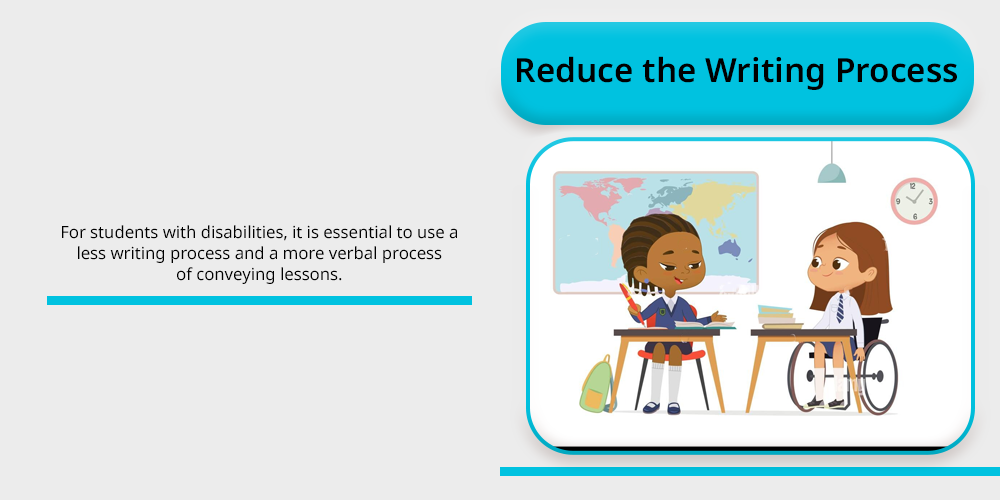
For students with disabilities, it is essential to use a less writing process and a more verbal process of conveying lessons. Provide students with preprinted class notes or copy notes for students.
This will help them to learn the concepts more easily and will save their time, so that they can manage the pace of the class. Also, including ICT in the classrooms also helps in making education more effective and flexible for disabled students.
10. Use Tape Recorder/Voice Recorder
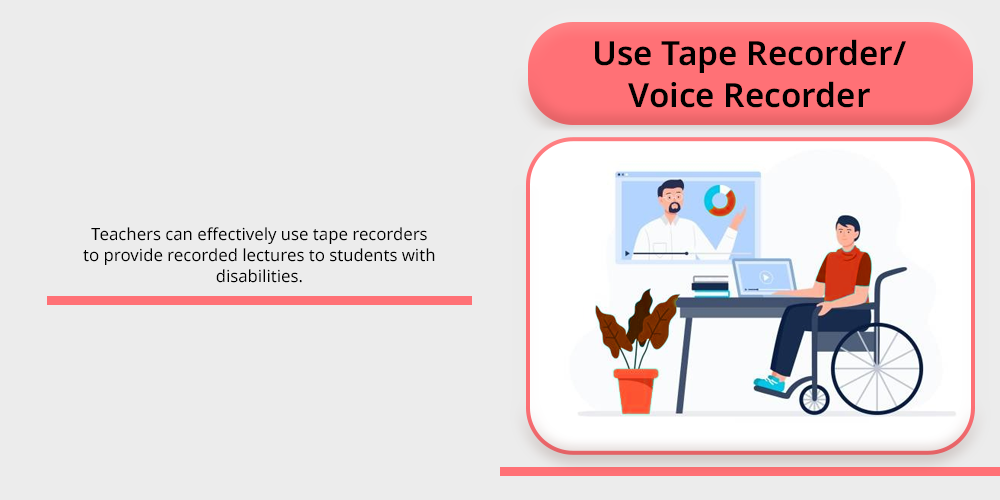
Teachers can effectively use tape recorders to provide recorded lectures to students with disabilities. Students with physical disabilities have problems in learning and writing due to which it becomes difficult to maintain the class speed.
In such a scenario, teachers can record their lectures and give to their students by contribution of technology in education through this students can effectively learn without any hindrances.
11. Give Extra Time

Teachers can give students with disabilities extra time to complete a task or assignment. Students who are physically challenged and have dyslexia or autism have difficulties in the reading and writing process, which takes time.
Giving extra time to such students will help to complete their assignments, tests and tasks. This also allows them to develop confidence and grasp concepts more easily.
12. Develop an Inclusive Learning Environment
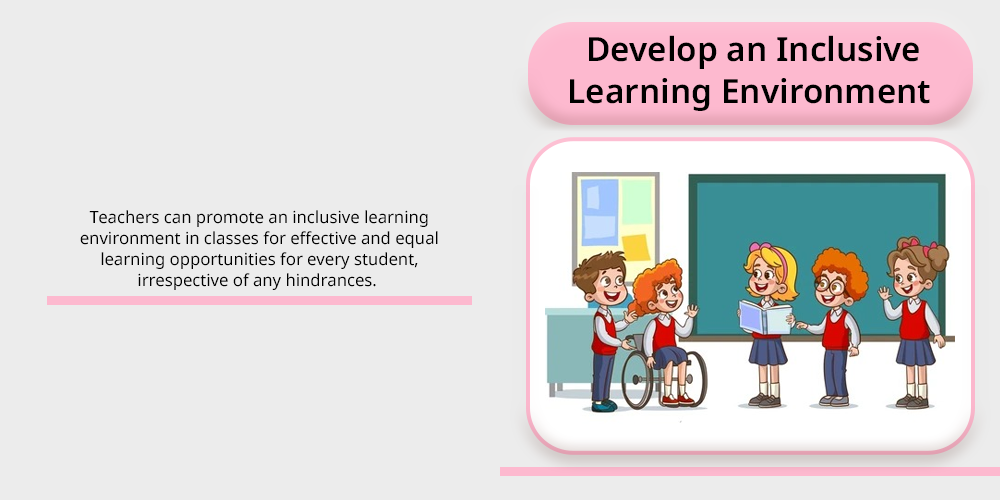
Teachers can promote an inclusive learning environment in classes for effective and equal learning opportunities for every student, irrespective of any hindrances.
Inclusive education helps in developing students’ mental health as well as promotes equal and quality education to them, which also assists in developing a positive learning environment.
Challenges Faced by Teachers while Supporting Students with Learning Disabilities
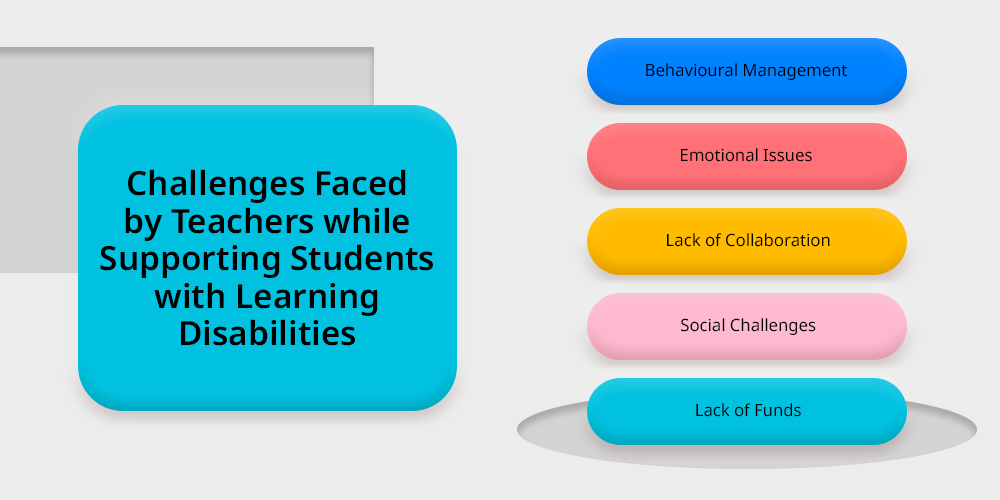
Teachers can effectively promote learning among physically challenged students through various strategies and activities. This initiative allows students to effectively engage in the learning process irrespective of their challenges, and promotes teacher student relationship.
However, along with so many initiatives and strategies, teachers still find it difficult to support disabled children. Here you can check the challenges faced by teachers to support education in disabled children.
1. Behavioural Management
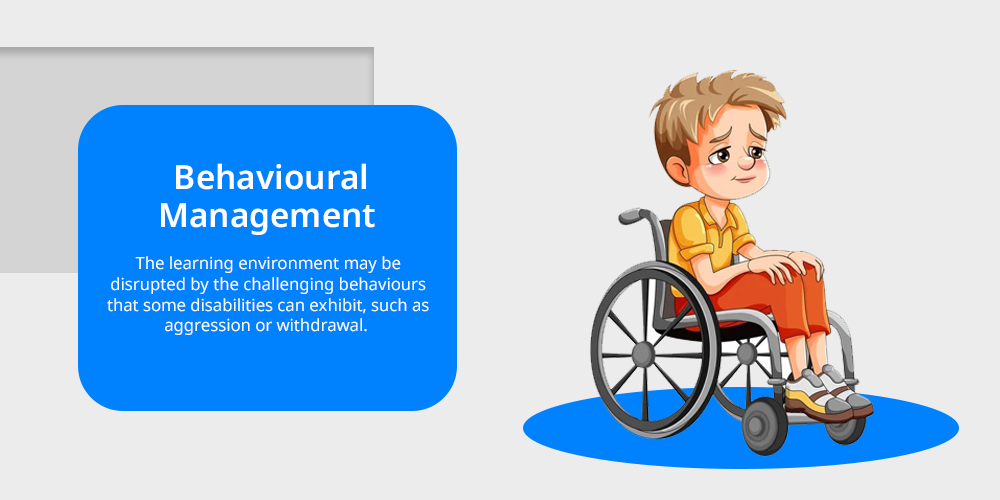
Behavioural issues are also a major factor that affects special education. The learning environment may be disrupted by the challenging behaviours that some disabilities can exhibit, such as aggression or withdrawal.
For this reason of behaviour problems in schools, it becomes tough to maintain the class speed and teach students effectively.
2. Emotional Issues

Emotional issues are the most common challenges that teachers face in managing classrooms with physically challenged students.
As students with disabilities need a longer time as compared to other students, and maintaining the same pace is essential to meet their requirements. Due to the influence of social emotional learning childrens find it tough to maintain the learning pace.
3. Lack of Collaboration
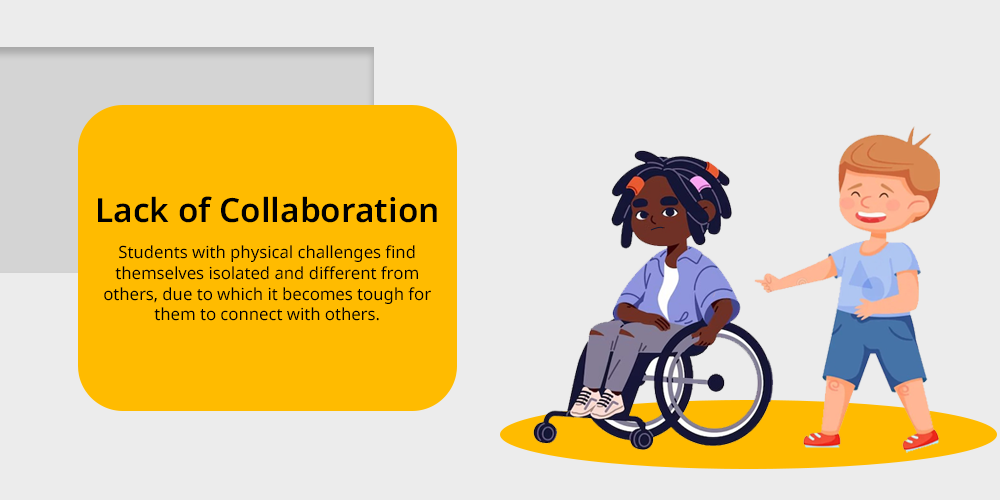
Lack of collaboration from parents and students is one of the major reasons that educators face while making education effective for students with disabilities. Students with physical challenges find themselves isolated and different from others, due to which it becomes tough for them to connect with others.
4. Social Challenges

Prejudice, discrimination and racial problems in schools against students with disabilities may lead to their exclusion from mainstream educational environments.
Due to negative attitudes, many students find it tough to connect with others and develop negative attitudes towards others. This challenge causes hindrances in the implementation of special education.
5. Lack of Funds
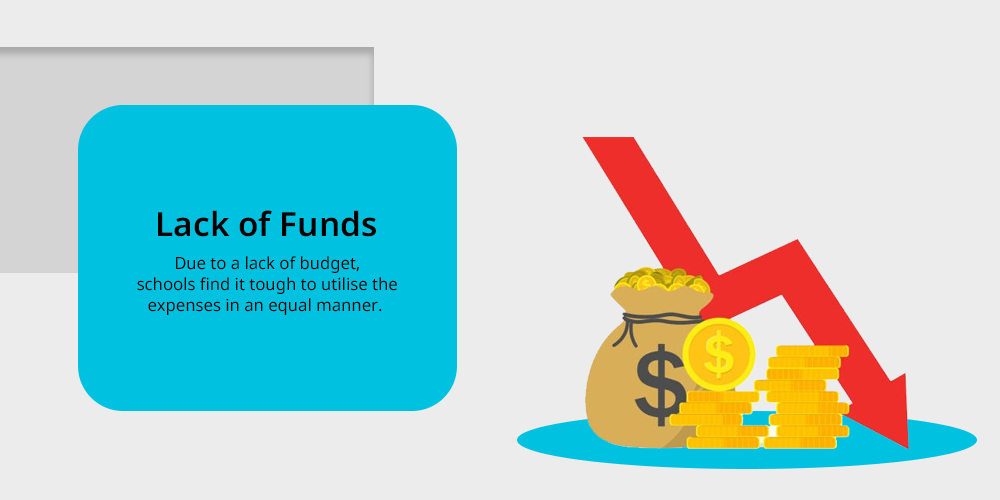
Insufficient budget is the major factor that hindrances the implementation of special education. Due to a lack of budget, schools find it tough to utilise the expenses in an equal manner.
Due to budget constraints, it becomes tough for schools to hire teachers for special education and provide them with salaries.
Final Thoughts
By putting different tactics into practice and encouraging a learning environment, teachers can play a critical role in helping students with learning disabilities.
Teachers can improve their students’ academic performance and social skills by employing strategies like differentiated instruction, peer tutoring, and visual representation.
These attempts, however, may be hampered by problems like poor behaviour problems in schools, emotional problems and a lack of teamwork.
Teachers’ dedication is crucial to empower kids with disabilities, enabling them to gain self-assurance and succeed academically and socially.

